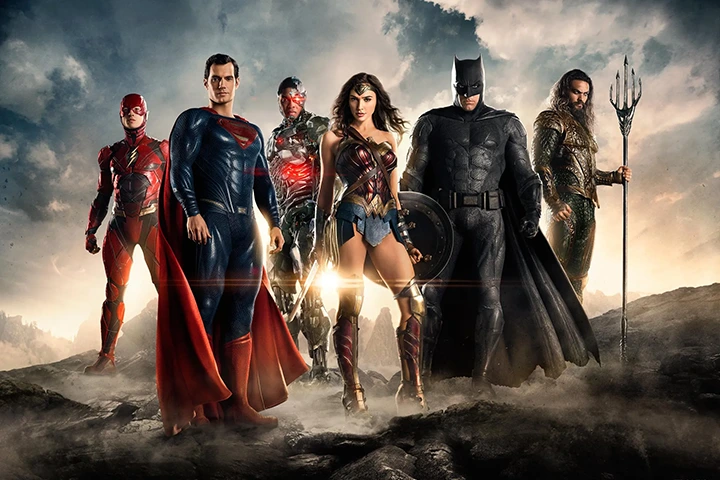The Justice League: A Deep Dive into DC’s Premier Superteam
The Justice League is arguably the most iconic superhero team in the DC Universe, serving as the primary defense against threats too great for any single hero to handle. Here’s a comprehensive overview, covering its history, core members, key storylines, and adaptations:
I. Origins & History
- Early Roots (Pre-Crisis): The concept began in the early 1960s with the need to bring together DC’s popular heroes. The first iteration appeared in The Brave and the Bold #28 (1960), featuring the Justice League of America (JLA) formed by Superman, Batman, Wonder Woman, Flash (Barry Allen), Green Lantern (Hal Jordan), Aquaman, and Martian Manhunter. This team was initially a response to threats that required a combined effort.
- Crisis on Infinite Earths (1985-1986): This landmark event drastically altered DC continuity. The JLA played a crucial role, but the multiverse was destroyed and rebuilt, leading to a revised history.
- Post-Crisis & Beyond: The League continued to evolve, with membership changes, different team dynamics, and various iterations (JLA, Justice League International, Justice League Dark, etc.). Different writers explored different facets of the team, focusing on political intrigue, cosmic threats, and internal conflicts.
- New 52 (2011): DC rebooted its universe, creating the “New 52” continuity. The Justice League was relaunched with a focus on the team’s formation and early struggles.
- Rebirth/DC Universe (2016-Present): The “Rebirth” era brought back elements of pre-Flashpoint continuity and further refined the League’s role. The current era, simply called “DC Universe,” continues to evolve the team’s story.
II. Core Members (Historically & Currently)
While the roster has fluctuated, these heroes are considered the core of the Justice League:
- Superman (Clark Kent/Kal-El): The Man of Steel, a symbol of hope and power. Often the team’s moral compass.
- Batman (Bruce Wayne): The Dark Knight, a master strategist, detective, and martial artist. Provides tactical expertise and contingency plans.
- Wonder Woman (Diana Prince): An Amazonian princess, a warrior for peace and justice. Brings strength, wisdom, and a connection to ancient lore.
- The Flash (Barry Allen/Wally West): The Fastest Man Alive, providing incredible speed and a lighthearted energy. (Both Barry and Wally have served as the Flash in the League)
- Green Lantern (Hal Jordan/John Stewart/Kyle Rayner): Wielders of a power ring granting incredible abilities. Represent the willpower and protection of the universe.
- Aquaman (Arthur Curry): King of Atlantis, bridging the gap between the surface world and the underwater kingdom. Provides aquatic expertise and immense strength.
- Martian Manhunter (J’onn J’onzz): A powerful telepath and shapeshifter, often acting as the team’s intelligence gatherer and strategist.
- Cyborg (Victor Stone): A half-human, half-machine hero, providing technological expertise and a connection to the digital world.
Other Frequent Members
- Green Arrow
- The Atom
- Black Canary
- Hawkman
- Hawkgirl
- Zatanna
- Firestorm
- Plastic Man
- Shazam!/Captain Marvel
III. Key Storylines & Events
- Crisis on Infinite Earths: As mentioned, a universe-altering event where the League played a vital role.
- Tower of Babel: A controversial storyline where Batman’s contingency plans for taking down each League member fall into the wrong hands.
- Rock of Ages: A story exploring the League’s future and the consequences of their actions.
- JLA/Avengers!: A crossover event between DC and Marvel’s premier superhero teams.
- Darkseid War: A massive conflict against the New God Darkseid, testing the League’s limits.
- Justice League: Origin: The New 52 retelling of the League’s formation.
- Justice League vs. the Legion of Doom: Classic battles against the League’s arch-enemies.
- Infinite Frontier: A recent storyline that re-established the multiverse and brought back elements of pre-Flashpoint continuity.
IV. Adaptations in Other Media
- Justice League Animated Series (2001-2004): Widely considered one of the best superhero cartoons ever made. It’s known for its mature themes, compelling characters, and faithful adaptation of classic storylines.
- Justice League Unlimited (2004-2006): Expanded the universe and featured a larger roster of heroes and villains.
- DC Animated Universe Movies: Numerous direct-to-video animated films featuring the Justice League, often adapting popular comic storylines.
- Justice League (2017): The first live-action theatrical film featuring the League, directed by Zack Snyder. It received mixed reviews and underwent significant post-production changes.
- Zack Snyder’s Justice League (2021): A four-hour director’s cut of the 2017 film, restoring Snyder’s original vision. Generally received much more positive reviews.
- Peacemaker (2022): An HBO Max series spun off from The Suicide Squad and connected to the broader DC Extended Universe, featuring interactions with the Justice League.
- Justice League: Crisis on Infinite Earths – Part One & Two (2024): Animated adaptation of the iconic storyline.
V. Themes & Significance
- Unity & Cooperation: The Justice League embodies the idea that even the most powerful individuals are stronger when they work together.
- Responsibility & Sacrifice: The heroes often face difficult choices and make sacrifices to protect the world.
- Hope & Inspiration: The League serves as a symbol of hope and inspires others to fight for justice.
- The Balance of Power: The League’s existence raises questions about the role of superheroes in society and the potential for abuse of power.
Where to Start Reading
- JLA by Grant Morrison: A highly acclaimed run that redefined the League for a modern audience.
- Justice League: Tower of Babel by Mark Waid: A controversial but thought-provoking storyline.
- Justice League: Origin by Geoff Johns: A good starting point for the New 52 era.
- Justice League Dark by James Tynion IV: Focuses on the League’s mystical side.
The Justice League remains a cornerstone of the DC Universe, constantly evolving and adapting to reflect the changing times. Its enduring popularity is a testament to the power of teamwork, heroism, and the enduring appeal of iconic characters.
Do you have any specific aspects of the Justice League you’d like me to elaborate on? For example, are you interested in a particular member, storyline, or adaptation?
